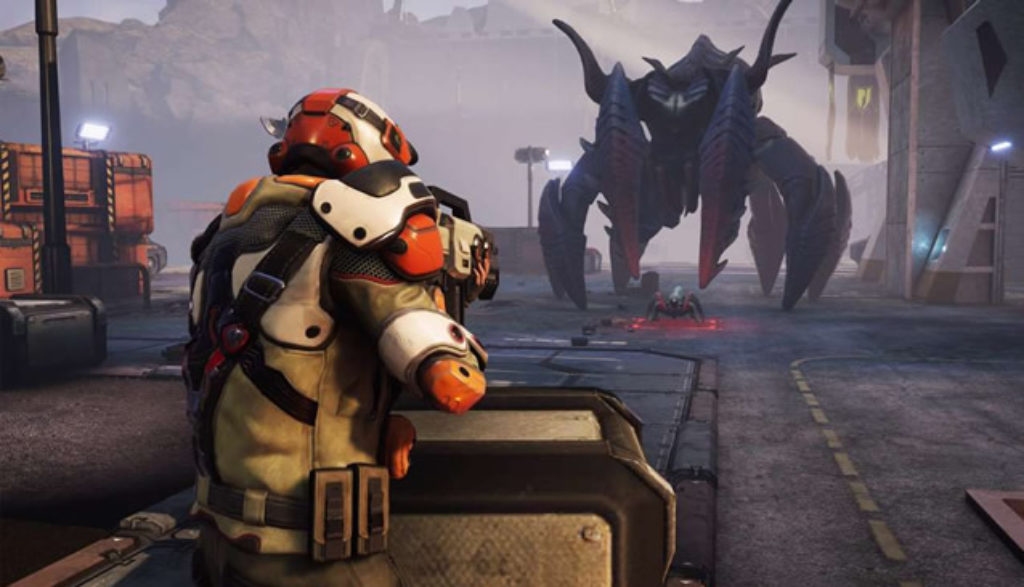
For fans of the XCOM strategy video game series, there’s a new tactical battler out with a similar pedigree. It’s called Phoenix Point, and it has the distinction of being designed by Julian Gollop, the man who created the 1994 original, X-COM: UFO Defense. But this time, instead of staging turn-by-turn strategic battles against little space aliens with laser rifles, the threat is rising from the depths of the sea: You fight mutated crab thingies with organic … laser rifles.
Red Lobster of Destruction
Is it a sudden case of long-abused seafood rising up to take its revenge? Well, not quite. Mankind’s calamity is sparked in the near future when the Earth’s warming patterns melt some Arctic permafrost and release a hidden-away Pandoravirus that mutates anything it touches. Once the virus dribbles into the ocean, all bets are off. The weather goes nuts, sea creatures become aquatic horrors and a strange mist starts spreading across the land and destroying the world’s infrastructure. On top of that, thousands of people shamble directly into the ocean in pied-piper fashion and reemerge as tentacle-covered monsters themselves.
By the time we hit the mid-to-late 2020’s, that global apocalypse has brought the world’s populace to the brink of extinction. Mankind can no longer think in terms of nations or empires. Instead, humans wall themselves off in one of three remaining global factions: One focuses on technology as the cure for the world’s ills, another leans on military options, and a third is driven by a cultish religion.
Of course, all three factions struggle with the failings of their own philosophies as they battle the virus and each other. That’s where you come in. You’re the leader of a cell of the Phoenix Project, a global organization that’s been hidden and dormant. But now it’s time to get the gears spinning once more and not only push back against the encroaching virus but help to rally humanity in its time of peril.
Gameplay wise, there’s so, so much to do. And you do it in three main areas:
The Geoscape is essentially the world map. And it lists all the points around the globe that need some immediate attention: which is essentially everywhere. There are creature nests aplenty in India, and a New Jericho faction (that’s the militaristic group) in China needs research help: Florida is sinking into the ocean and the viral mist is spreading through South America. On and on the troubles go. It’s up to you to decide how, where and when to strategically fight back and deal with scores of impossible problems, because if the infestation grows to 100%, the whole world goes caput.
Gameplay area two deals with building Phoenix Project bases and buildings. You choose where to invest your scarce resources—from equipment manufacturing to the research of new tech. And then there’s the housing and equipping of new soldiers that you recruit from the human factions. You have to stay on your toes in all those areas because the attacking creatures are ever-changing: They learn from past battles and quickly evolve new ways to attack and defend.
Lastly, gamers navigate the combat objectives themselves. Soldiers have a limited number of action points that you can use for moving, shooting, taking cover, overwatching a given area for enemy incursion, or healing a friend in need. And each of the six classes of soldiers has his own particular and upgradable skills, ranging from the ability to use various weapons to special psychic abilities. Turn by turn you must strategically move your men and women—seen from a three-quarters tactical overview—like chess pieces on a freeform and increasingly complicated map.
The game and its strategy, on and off the battlefield, is pretty fun. There’s certainly a lot of replay potential here and challenging activities to jump into. And the deadly goopiness is kept reined in.
That said, you will find red bloody splash in the trigger-pulling and bomb-throwing mix. And you can zoom in to a first-person aim-down-a-rifle-sight perspective to pinpoint your gunshots at human and beastie foes, which can make a shot feel more bloody and intense when characters cry out after being hit. Creatures and some cultish human characters wield bizarre psychic abilities to harm or mesmerize others, as well.
Perhaps the most uncomfortable part of play, however, is when you lose members of your team. You spend time with them, getting to know their personalities and strengths and weaknesses. You shape and upgrade them. So if you accidentally mishandle a move and leave some squad mate vulnerable, the death can feel almost shocking. And when they’re gone, they’re gone for good.
Frankly, this is pretty much exactly what one might expected from a T-rated turn-based strategy title of this stripe: A bit of blast and burn mess without being too intense or worrisome. Designer Julian Gollop has woven in a certain set of tweaks to his old X-COM formula, but it’s still his formula, and this feels very much like his game.

After spending more than two decades touring, directing, writing and producing for Christian theater and radio (most recently for Adventures in Odyssey, which he still contributes to), Bob joined the Plugged In staff to help us focus more heavily on video games. He is also one of our primary movie reviewers.